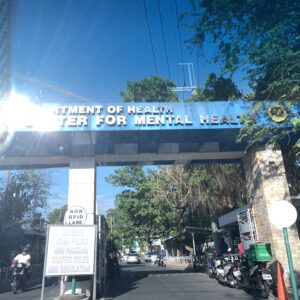
#AdoptingASmile: What You Need to Know About Child Adoption in the Philippines
Ola, everyone! My topic for today is something very close to our heart -children! A friend of mine recently shared their success story of legally adopting a child here in the Philippines. Their child just came this December and it was truly a gift for them. Naturally I was eager to learn more so I could pass along the deets to you. Today, I will be sharing this journey with you who might be thinking of going through an adoption process yourself.
It’s no secret that adopting a child can be a long and complex process filled with paperwork, home studies, and uncertainties. As someone who lives in the Philippines but far from Manila, I understand how challenging it can feel to navigate the adoption system here. But for loving parents who open their homes and hearts to a child in need, it’s truly a rewarding experience.
This has been very frustrating and the government -specifically the Department of Social Welfare and Development (DSWD) has always been criticized for it’s role in keeping these high numbers of unadopted due to the almost unachievable requirements for adoption.
Turns out there’s a brand new office dedicated to handling adoptions opened just this 2022- The National Authority for Child Care or NACC for short. It’s something like a one-stop shop for all the adoption process and touted to be an answer to the adoption crisis in the Philippines . This was made possible by the Republic Act No. 11642 (RA 11642) otherwise known as the Domestic Administrative Adoption and Alternative Child Care Act, This law re-organized the adoption process into a one-stop quasi-judicial agency on alternative child care, known as the National Authority for Child Care (NACC), which is still attached to the DSWD.
According to my friend, the process was long but surprisingly seamless thanks to NACC’s organization and coordination between all the moving adoption approval parts. Translation: less headaches for hopeful parents! It took them almost two years for the process but given the pandemic situation at the time of their application, they were pretty happy with the time frame. The NACC targets 6 months to under a year for the whole process.
The fact that they also chose to adopt via an agency also made the process easier as they were already briefed on what to expect, what to prepare, and also had help in preparing most of the documentary requirements which is where independent adoption usually ends up with a problem.
One of the things he shared that I wish to share is that there are so many misconceptions about adopting in the Philippines. Foremost is that if you are not part of a couple, you cannot adopt. But adoptions are processed for individuals, as explained by the NACC-therefore LGBTQ couples can adopt.
How to process a legal adoption in the Philippines
In this post, I’ll break down the main steps of adopting within the Philippines based on my own research on what is available online. My hope is that sharing what I’ve learned can help ease some of the stress and confusion that comes with the territory. So whether you’re just starting to explore adoption or well into the process, read on for an overview of what to expect.
The first step is getting pre-approved by the Department of Social Welfare and Development (DSWD). Go to the nearest office and submit an application form. Then you will through an extensive home study. This involves things like background checks, examinations of your finances and living situation, and interviews to assess your motivation and suitability as a parent. It’s meant to protect the children’s best interests.
Once approved, you’ll work with a licensed social worker or adoption agency to be matched with a child. Most placements involve infants or young kids, but older children and siblings groups also need homes. Have an open mind regarding age, gender or medical needs.
For international adoptions, you’ll need additional clearances from the Inter-Country Adoption Board and usually the home country’s government too. The timeline can vary greatly depending on the country and may take 1-2 years.
The adoption process is finalized in family court. This involves a review of your application and home study, as well as a judge formally granting custody. Congratulations, you’ll then receive a Certificate of Final Adoption!
Here’s a concise guide to help you navigate the process:
- Orientation and Pre-Application Seminar: Attend an orientation seminar provided by the Department of Social Welfare and Development (DSWD). Afterward, join a pre-application seminar to gain insights into the adoption process.
- Submit Required Documents: Prepare necessary documents, including birth certificates, marriage certificates (if applicable), medical certificates, and police clearances. Complete the required forms provided by the DSWD.
- Home Study and Evaluation: Undergo a home study conducted by a licensed social worker. This involves assessing your suitability as adoptive parents, ensuring a safe and conducive environment for the child.
- Matching and Placement: Once approved, the DSWD will match you with a child available for adoption. Placement may be provisional initially, allowing both the adoptive parents and the child to adjust.
- Post-Placement Assessment: A post-placement assessment will be conducted to monitor the adjustment and well-being of the child in your care.
- Court Petition: File a petition for adoption with the regional trial court. This initiates the legal process, and a court hearing will be scheduled.
- Court Hearing: Attend the court hearing, where the judge will evaluate the adoption petition. If approved, a new birth certificate for the adopted child will be issued.
- Finalize Adoption: Obtain the court decree of adoption, which finalizes the legal adoption process. Secure multiple copies of the new birth certificate from the Philippine Statistics Authority (PSA).
- Report Compliance: Submit post-placement reports to the DSWD and comply with any post-adoption requirements outlined by the court.
- Update Records: Keep all adoption records updated, including changes in contact information, for future references.
Always seek advice from legal professionals or adoption agencies to ensure compliance with current regulations. This guide provides a concise overview, but details may vary based on specific circumstances and legal updates.
As with any major life change, there may be adjustments on all sides as you come together as a family. But the rewards of adoption are immeasurable. I’ve seen firsthand how it can heal hurts and bring untold joy. If you feel called to provide a loving home through adoption, don’t get discouraged – stick with it. The wait will be well worth it in the end!
Do you have additional questions about international or domestic adoption here in the Philippines? Feel free to leave a comment below.

Hello! I am April
...I don't know exactly what a prayer is. I do know how to pay attention, how to fall down. into the grass, how to kneel down in the grass, how to be idle and blessed, how to stroll through the fields, which is what I have been doing all day. Tell me, what else should I have done? Doesn't everything die at last, and too soon? Tell me, what is it you plan to do with your one wild and precious life?
- That Summer Day. Mary Oliver Tweet










